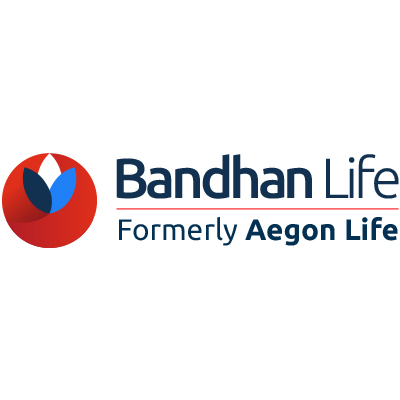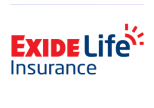Differences Between Policy Term And Premium Payment Term
Term insurance plans offer coverage for a specified period known as the policy term. The policy term refers to the amount of time for which the policy remains in force, provided that your premiums are paid on time. To sum up, a policy term is a duration during which you can enjoy the policy benefits.
On the other hand, the premium payment term is the total number of years for which policyholders are required to pay the premium. Now, insurers have made many changes to their terms and conditions so that policyholders can enjoy flexible payment terms.
Table of Contents
Difference Between Policy Term And Premium Paying Term
Term insurance policy's term also known as coverage period, is determined when it is purchased, and it refers to the length of time for which it will remain active. It starts from the policy's effective date and ends when the policy matures or expires.
The policy term varies based on the type of insurance and the preferences of the policyholder. The policy term varies based on the type of insurance and the policyholder's preferences.
Premium-paying term refers to an altogether different concept. As the name implies, the premium-paying term is the period during which the policyholder pays premiums for his or her life insurance policy, which is why the terms are frequently confused. In most cases, the premium-paying term coincides with the policy term.
However, some insurers allow the premium paying term for a term plan to be shorter than the policy term. Premium payments are typically made regularly, such as monthly, annually, or semi-annually.
For example, if you purchase a term insurance plan that provides coverage for 40 years, the policy term will be 40 years. However, your insurer might allow you to pay off the premiums for your term plan over 20 years. Hence, in such a case your premium paying term will be just 20 years.
Relationship Between Policy Term and Premium Payment Term
While policy terms and premium payment terms are related, they do not always align. The premium payment term often influences the structure of premium payments and the overall cost of the insurance policy. It is possible to have different combinations of policy and premium payment terms, each with its implications:
- Regular Policy and Premium Payment Term: In this scenario, both the policy term and the premium payment term are equal. The policyholder pays premiums for the entire duration of the policy term. This is common in term life insurance policies, where coverage is provided for a specified number of years, and premiums are paid throughout that period.
- Limited Premium Payment Term: Some insurance policies offer a feature where the premium payment term is shorter than the policy term. For example, a 20-year life insurance policy might have a premium payment term of 10 years. After the premium payment term ends, the policy remains in force, but the policyholder is no longer required to pay premiums.
- Single Premium Policies: Certain policies allow policyholders to make a lump-sum premium payment at the beginning of the policy term. This payment covers the entire policy term, and the policy remains in force without requiring additional premium payments.
- Whole Life and Permanent Insurance: Permanent life insurance policies, such as whole life insurance, often have lifelong coverage. Premiums are paid for a designated premium payment term, which could be a set number of years or until a specific age. After the premium payment term, the policy remains active, and the accumulated cash value may cover future premiums.
Impact of Policy Term and Premium Payment Term on Affordability and Long-Term Planning
Understanding the relationship between policy terms and premium payment terms is crucial for policyholders when evaluating an insurance policy's affordability and long-term viability. Here's how these terms can impact affordability and planning:
- Short Premium Payment Term: Opting for a shorter premium payment term might result in higher premium amounts during the payment term but can lead to significant savings over the policy's entire duration. This approach is suitable for individuals who can afford larger premium payments upfront.
- Long Premium Payment Term: A longer premium payment term may lead to lower premium amounts during the payment term but could result in higher overall payments over the policy's lifetime. This option provides more flexibility for individuals with limited immediate financial resources.
- Balancing Policy and Premium Terms: Policyholders must strike a balance between the policy term and premium payment term based on their financial goals and circumstances. For example, someone seeking coverage during their working years might opt for a shorter premium payment term to align with their income flow.
Policy Renewal and Conversion
In scenarios where policy term and premium payment term are not aligned, policyholders need to be aware of potential renewal and conversion options:
- Renewal: When the premium payment term ends before the policy term, policyholders may need to renew the policy if they wish to continue coverage. Renewal terms, including premium rates, may change based on factors like the policyholder's age and health.
- Conversion: Some policies allow policyholders to convert their existing policy into a different type of policy at the end of the premium payment term. For instance, a term life policy might be convertible to a permanent life policy without the need for a medical exam.
Conclusion
The right term insurance plan and the right insurer are essential, but figuring out how long to keep the policy for yourself and your beneficiaries is just as critical. To make the most of your term insurance plan, make sure that your policy term is well aligned with your age, liabilities, and life goals. So, make sure to consider everything before you make an informed decision about your preferred term insurance plan.
Also Read -
Advantages Of Limited Premium Payment Term Insurance Plans
6 Most Frequently Asked Questions About Term Insurance Policies
Disclaimer: This article is issued in the general public interest and is meant for general information purposes only. Readers are advised not to rely on the contents of the article as conclusive and should research further or consult an expert in this regard.









































